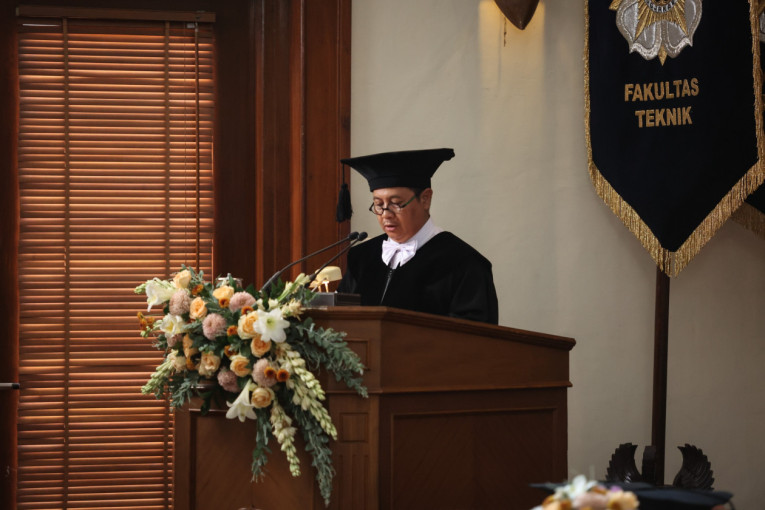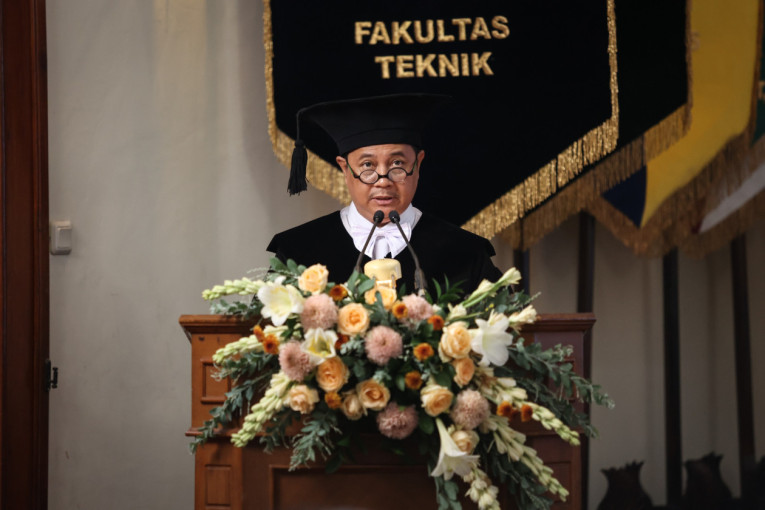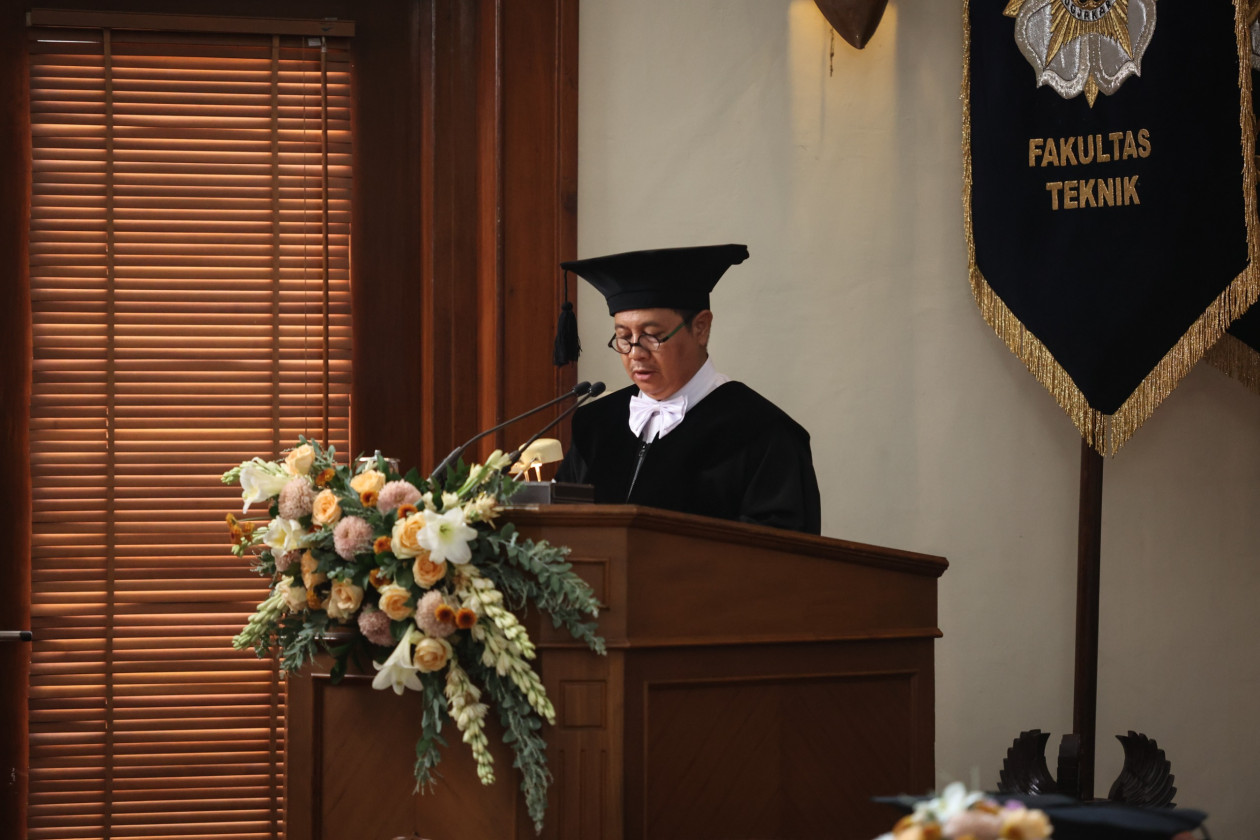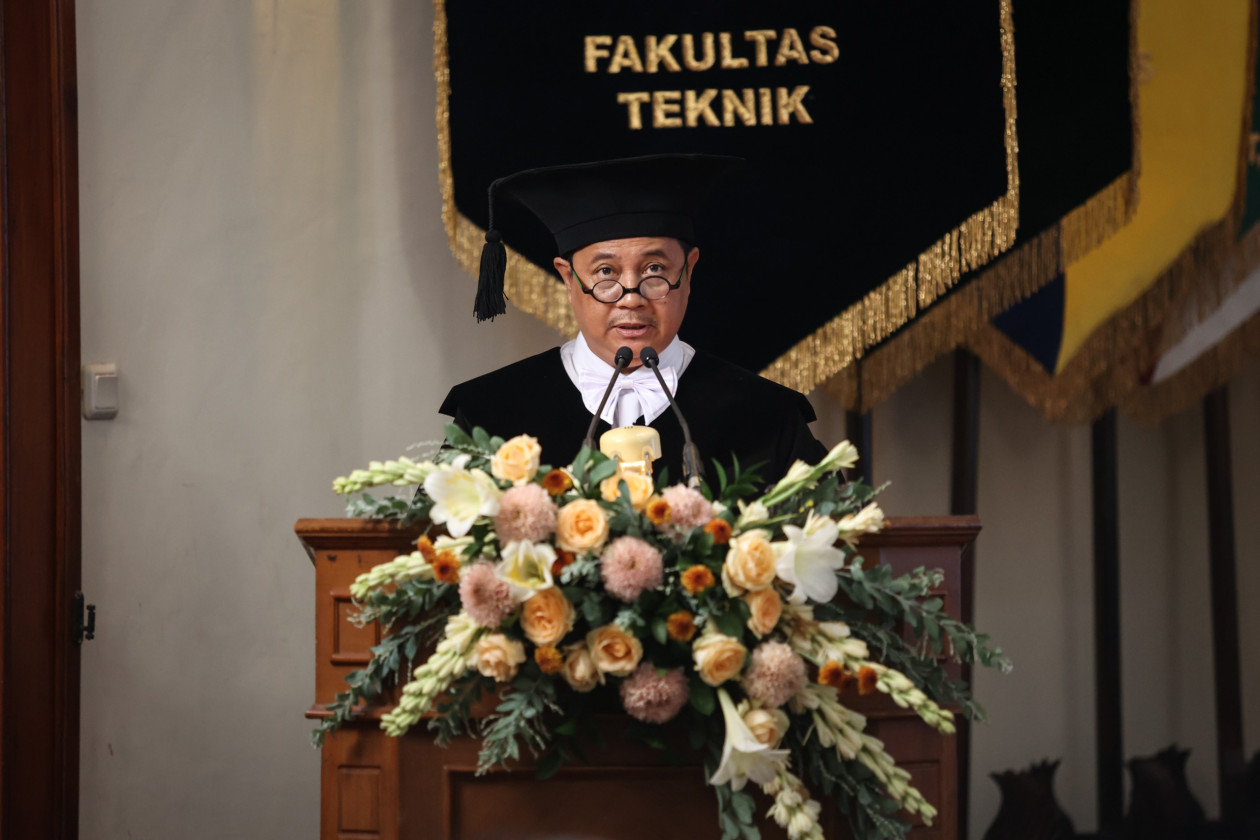Professor Risanuri Hidayat, an esteemed faculty member at the Department of Electrical and Information Engineering, UGM Faculty of Engineering, has been formally appointed as a professor in signal processing.
The inauguration ceremony on Thursday (Feb. 29) at the UGM Senate Hall officially recognized his exceptional contributions. During this significant event, he delivered an inaugural speech titled “Authentication for Data Security in Contemporary Communication and Information Technologies.”
Professor Hidayat embarked on a journey through the evolution of data communication across generations in cellular telecommunications and the historical progression of internet communication.
He underscored the exponential rise in global internet usage, which has witnessed a surge in cybercrimes. Consequently, he emphasized the critical necessity of cybersecurity to safeguard the digital realm. Protecting sensitive data such as personal identities and intellectual property rights is paramount in the modern era.
“In the vast landscape of the internet, cybercriminals lurk, continuously evolving their tactics to outsmart conventional cyber defenses. Comprehensive cybersecurity measures are imperative to ensure robust protection,” he elucidated.
Highlighting authentication as a critical aspect in combating various forms of internet crimes, Professor Hidayat emphasized its importance. Robust authentication mechanisms are necessary to uphold security and authenticity while thwarting unauthorized access attempts.
“Among authentication methods, biometric authentication stands out due to its inherent superiority over conventional methods like passwords and digital certificates,” he added.
“Biometric technology leverages unique user features such as fingerprints, voice, or facial characteristics, rendering it significantly more resistant to forgery. Furthermore, it eliminates the risk of password theft or loss.”
Professor Hidayat also shed light on the promising realm of multimodal biometrics, exemplified by the integration of fingerprints and facial recognition deployed in international airports. Current research explores gesture-based authentication, harnessing distinctive physical movements or patterns unique to each individual.
This innovative approach bolsters security against identity theft. It enhances user convenience and is applicable across diverse devices and platforms, mitigating the risks of phishing attacks.
“By using characteristic movements by the user, gesture authentication provides protection against identity theft, offers user convenience, and can be used in various devices and applications. This reduces the risk of phishing, and its widespread use makes gesture authentication an important choice in maintaining system and information security,” he explained.
“Advancing research in amalgamating diverse authentication features to achieve heightened accuracy, swifter processing speeds, and enhanced resistance to interference holds immense promise for real-world applications.”
Author: Gloria
Photographer: Donnie





